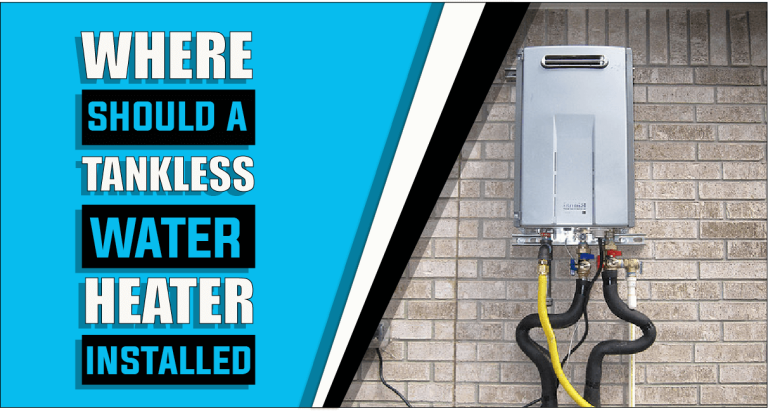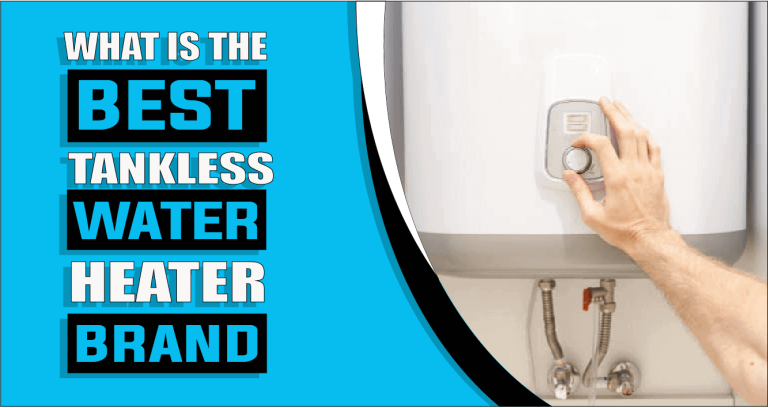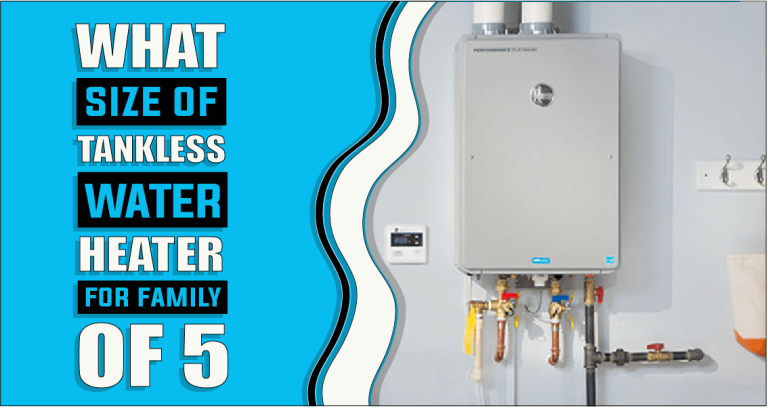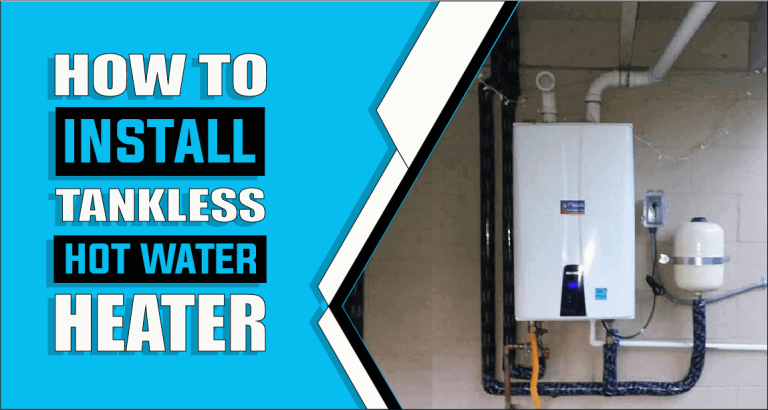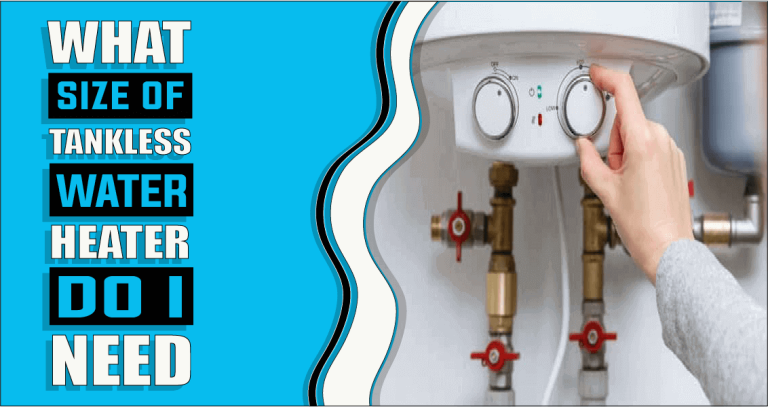Do Tankless Water Heaters Need To Be Flushed – The Truth Reveals
Are you a tankless water heater owner looking for ways to increase the efficiency and longevity of your system? If so, you may have heard about maintenance tasks such as flushing. But do tankless water heaters need to be flushed? Truth is, tankless water heaters do need to be flushed occasionally and it’s an important part of keeping them rolling in optimal condition. Flushing isn’t just important for efficiency reasons, it can also impact its longevity. In this blog post, we’re going to dive into the details of why and when it’s necessary to flush your tankless water heater. We’ll also explore how regular flushes ensure that hot water will remain plentiful in your home for years to come, plus some easy-to-follow steps on exactly how these units should be cared for. So grab a cup of tea and get settled in; we’ve got all the facts ready so that you can make an informed decision about maintaining your tankless water heater with confidence and ease!
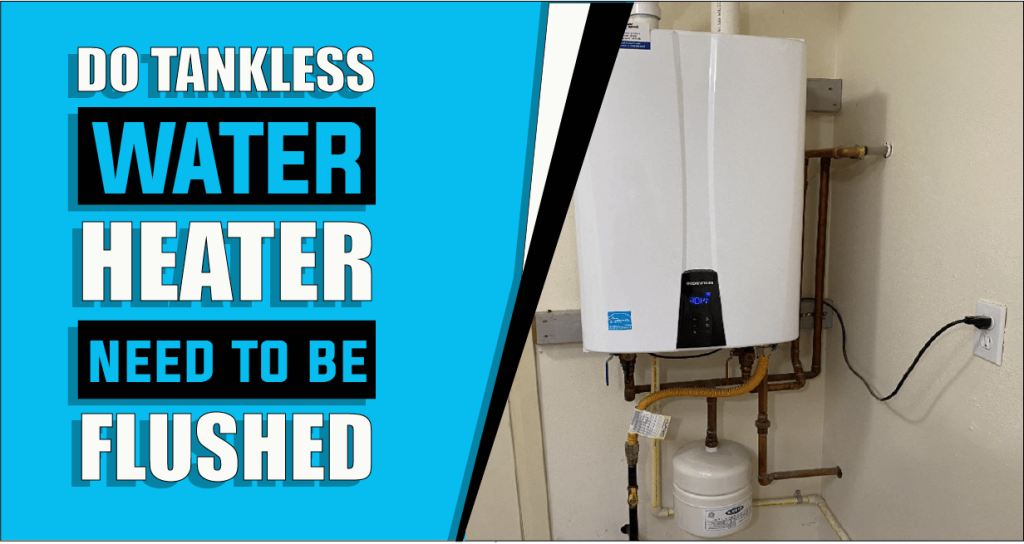
Let’s explore do tankless water heaters need to be flushed.
If you use a tankless water heater in your home, then you may be queried about whether a tankless water heater needs to be flushed or not. Yes, flushing the tankless water heater needs to be done periodically. This is because minerals and other sediments can build up over time in the heating element of your unit, impeding its performance, reducing its longevity, and even leading to complete system failure if not addressed.
Fortunately, regular flushing can keep these issues at bay by removing any unwanted buildups from the heating elements of your tankless water heater. Regularly scheduling this maintenance also has other benefits overall improved efficiency and extended life expectancy for your heating system.
Summarily, flushing tankless water heaters can do a lot for their life and performance, so if you want to maintain yours—and stay cozy with hot water all year long—then read on to learn more about why and how you should flush it!
When to Flush Your Tankless Water Heater
It is important to flush your tankless water heater regularly to ensure optimal performance and help prevent corrosion and scale buildup. Flushing your tankless water heater prepares it for the cold winter months when you may need more hot water than usual, and helps to protect it from damaging minerals that can accumulate over time. Here are some tips on when to flush your tankless water heater:
1: Whenever You Notice Issues:
If you notice any signs of decreased performance or any type of discoloration or sediment in your hot water, this is a clear sign that you should immediately flush your tankless water heater to remove these potentially harmful materials.
2: Once Every Six Months:
Even if you are not noticing any issues with your hot water, it is recommended that you flush your tankless water heater at least once every six months as mineral deposits can slowly build up over time and potentially damage the metal components of the unit.
3: Before Winters:
If you live in an area where the winters tend to be particularly more frosty, then it is a good idea to flush your tankless water heater before winter hits so that it can handle increased demand more easily.
4: After Repair or Maintenance:
If you have recently completed a repair or maintenance service on your unit, then flushing is highly recommended to make sure all parts are functioning properly and there hasn’t been any buildup of debris that could hurt its performance.
Therefore, by ensuring that you flush your tankless water heater regularly, you can help keep it performing optimally and reduce the potential for corrosion or scale buildup which could cause permanent damage down the road.
Flushing Procedure of Tankless Water Heater
Flushing tankless water heaters should be done once every six months or more frequently depending on usage and local water hardness levels. Flushing your heating system should be done regularly to keep it running efficiently and prevent any property damage that could occur due to buildup or corrosion inside the unit. Taking some time every few months to flush your tankless water heater can help save you time, money, and headaches in the long run.
Flushing a tankless water heater is fairly simple and can be done in just a few steps. Here is how to flush your tankless water heater:
- Turn off the power or gas supply to the heater.
- Shut off the cold water supply valves for both the hot and cold lines at the main line connection.
- Connect a garden hose to the drain valve on the side of the heater and run it outside or into a bucket for draining.
- Open up all of the hot water faucets in your home until all of the hot water has been drained from them. This will help to drain any built-up sediment from your system that may have accumulated over time.
- Then open up the drain valve until you see clean water flowing out; keep flushing until you no longer observe any sediment inside. This should be done for about 10 minutes.
- Once the flushing process is complete, turn off the cold-water supply valves and disconnect the garden hose from your tankless water heater.
- Finally, turn on all of your hot water faucets to refill the system with clean fresh water, and turn on the power or gas supply.
- The process may need to be repeated every 3-6 months for optimal performance, depending on your local water quality and usage level; but following these steps will help ensure that your tankless water heater keeps running smoothly with minimal risk of property damage.
DIY Flushing or Professional Service, Which should be done?
When it comes to flushing a tankless water heater, the decision should be made as to whether it should be done as a DIY project or a professional service. Doing it yourself can save time and money, but if not done properly, it could have the opposite effect. On the other hand, calling in a professional may cost more upfront, but it is likely to ensure that everything is done correctly and safely.
DIY Flushing of Tankless Water Heater
For homeowners who are comfortable with basic plumbing maintenance and have the necessary tools on hand, performing flushing themselves might be an option worth considering. The process involves turning off the power or gas supply to the water heater tank and draining some of the water out of it until sediment starts flowing out. Once enough has been removed, clean water should be added back into the unit while being careful not to overfill it. After all of this is completed, then power or gas can be restored and tested for proper operation before putting back into use.
Professional Flushing of Tankless Heating Unit
On the flip side, hiring a trained professional offers peace of mind knowing that everything was done according to the manufacturer’s instructions and local codes. This ensures that safety protocols are met and any potential problems are addressed ahead of time without having to go through what could become an expensive repair job later down the road. Plus doing so provides access to specialized parts, such as thermometers for measuring temperature fluctuations to gauge how well your system is working. Additionally, professionals often provide follow-up services such as chemical treatments for preventing hard water buildup over time which helps protect your investment from future issues related to mineral deposits in pipes or tanks.
In cessation, when confronted with deciding between DIY flushing or professional service for a water heater, it’s important to consider both options carefully before making a final decision. If you feel confident in your abilities and have access to all necessary tools and materials then doing it yourself could be an excellent choice; however, if you’re looking for assurance that everything will be handled correctly then going through a certified technician is usually recommended as they guarantee their work will meet required standards every time.
Importance of Flushing Water Heaters
Flushing the tankless water heater is important for three main reasons:
1: Enhance Performance
Flushing tankless water heaters can greatly enhance their performance and efficiency. Flushing the heater regularly helps to remove debris, lime deposits, calcium buildup, and other contaminants that can clog the system, reduce the flow rate and decrease the heater’s ability to retain heat. Not only does flushing prevent these contaminants from building up, but it also helps extend the life of the heater. By removing scale-forming buildups and improving the water quality in the system, it is possible to optimize performance and extend the life expectancy of a tankless water heater.
2: Improve Energy Efficiency
Flushing tankless water heaters is an important maintenance measure that also helps improve energy efficiency. By regularly flushing these units, users can help remove the build-up of sediment and other byproducts of heated water. This ensures that the heater performs its job more efficiently, using less energy and saving money on your utility bills in the process. Additionally, because tankless water heaters are up to 34% more energy efficient than traditional models, regular flushing helps maintain the optimal operation of your unit which allows it to deliver maximum energy savings throughout its lifespan.
3: Avoid Property Damage
Flushing tankless water heaters is an important step in maintaining efficient performance and avoiding property damage. Regularly flushing the system will help to prevent mineral buildup, which can cause corrosion damage and inhibit the heater’s ability to produce hot water. Doing so will also minimize the risk of leaks and can help to avoid any property damage if your water heater were to malfunction or even burst due to buildup in the system.
Overall, flushing helps to reduce energy costs by making sure that your unit is running at peak efficiency. In addition, regular maintenance saves you time and money down the road as it prevents any costly repairs or replacements from being needed due to neglect or buildup over time.
Last but not least, flushing your tankless water heater helps to extend its life.
How Much Does It Cost To Flush A Tankless Water Heater?
The cost of flushing a tankless water heater will depend on several factors. If you decide to perform the maintenance yourself, then the only costs associated with the job are for any tools or materials you may need. On the other hand, if you opt to have a professional flush your unit, then additional fees may be applicable such as labor and parts.
In terms of what it typically costs, DIY flushes usually range from $10-50 depending on how much product is used and whether you rent or buy any necessary supplies. For professional services, typical prices range from $100-200 which includes all labor costs and any replacement parts that may be required during the job.
No matter what approach you take when looking to flush your tankless water heater, it is important to make sure that it is done correctly and safely. Although DIY maintenance is usually the most cost-effective option when looking to flush a tankless water heater, if you’re looking for assurance that everything will be handled correctly then going through a certified technician is usually recommended as they guarantee their work will meet required standards every time.
Frequently Asked Questions
Yes, tankless water heaters should be flushed regularly to maximize performance efficiency and prevent any potential property damage.
If a tankless water heater isn’t flushed, then mineral buildup and corrosion can occur which inhibits its ability to produce hot water. Additionally, it may also lead to leaks or even burst pipes due to the increased pressure from sediment buildups in the system.
The cost of flushing a tankless water heater will depend on several factors such as whether you do it yourself or have a professional take care of the job. DIY flushes typically range from $10-50 while professional services usually cost between $100-200.
If your tankless water heater is not producing hot water as quickly or efficiently as it used to then this may be a sign that it needs to be flushed. Additionally, if you notice any leaks around the unit or hear strange noises coming from it then these could also be indicators that a flush is needed.
Yes, it is possible to flush a tankless water heater on your own if you have the right tools and knowledge. However, if you are unsure of how to do this correctly then going through a certified technician is usually recommended as they guarantee their work will meet required standards every time.
Tankless water heaters should be serviced at least twice a year to keep them running efficiently and prevent any potential problems from occurring. Additionally, they should also be flushed regularly to maximize performance efficiency and prevent any property damage.
Conclusion
Do tankless water heaters need to be flushed? Yes, tankless water heaters should be flushed regularly to maximize performance efficiency and prevent any potential property damage. Flushing a tankless water heater can cost anywhere from $10-200 depending on whether you decide to do it yourself or hire a professional service, but either way, the job must be done correctly to ensure its longevity and safety. Therefore, regular maintenance such as flushing your unit at least twice a year is recommended to keep it running efficiently and help avoid any costly repairs down the road. In this blog post, we’ve taken a look at why flushing your tankless water heater is essential for its performance and longevity. With just a few simple steps, you’ll get on the right track toward having reliable hot running water without fail. So pull up a chair while exploring all that flushing can do for your trusty tankless buddy!
Ella John is passionate about helping her readers make the best choice when purchasing a heater. She understands that selecting a heater can be difficult and strives to provide information to help make the decision easier. Ella’s website, Heatersinfo.com, provides valuable insight into heating trends and types of heaters and tips on how to care for them. She also advises selecting the right heater based on individual needs and preferences. Her expertise in electronics makes her an excellent source of knowledge, and she is confident that anyone who visits her website will find the perfect heater information for their needs. Ella’s dedication to helping others make educated decisions about buying the right heater is unparalleled, and she hopes to continue offering her expertise for many years. With Ella’s help, finding the perfect heater can be a breeze!

